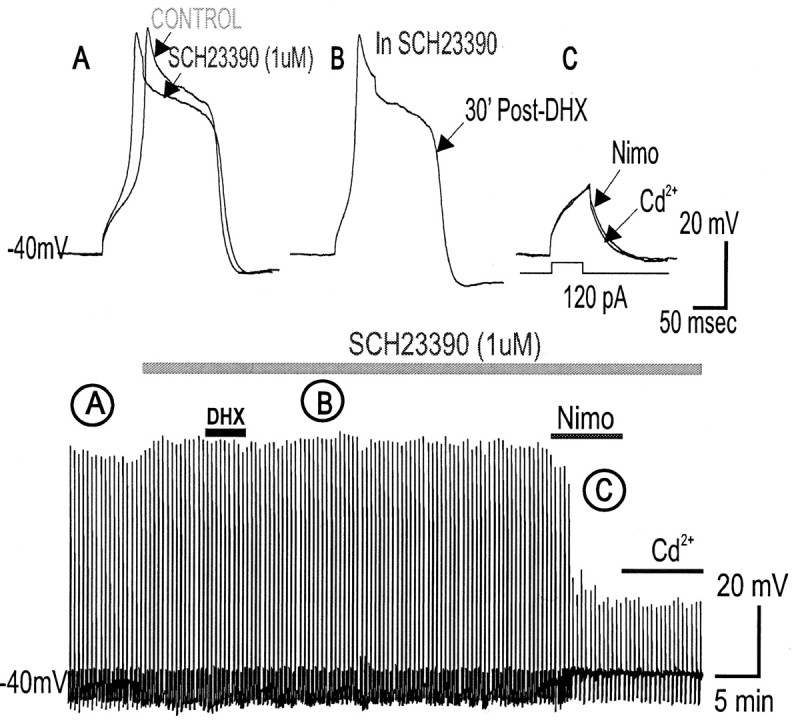Figure 5.

Blocking D1/D5 receptors with SCH23390 prevents DHX-mediated suppression of high-threshold Ca2+ spikes. A, Application of the selective D1/D5 receptor blocker SCH23390 (1 μm) alone did not change the suprathreshold evoked Ca2+ spiking properties (peak and area) in PFC neurons. B, D1/D5 receptor activation by DHX (10 μm) in SCH23390 failed to attenuate the Ca2+ spike, suggesting that DHX-mediated attenuation of suprathreshold evoked Ca2 spikes requires D1/D5R activation. C, Subsequent application of a specific L-type Ca2 blocker nimodipine (10 μm) suppressed the Ca2 spike, whereas further exposure to cadmium (200 μm), a selective blocker of Ca2 channels, blocked a residual component of the Ca2+ potential so that only the membrane capacitative response remained. The bottom time-compressed traces indicate the time course of the response. D, Histograms of group data showing that D1/D5R activation (DHX alone) suppresses the Ca2+ spike but DHX application in the presence of SCH23390 prevents the suppression, suggesting that DHX-mediated suppression of suprathreshold evoked Ca2+ spikes depends on D1/D5R activation. Nimo, Nimodipine.
